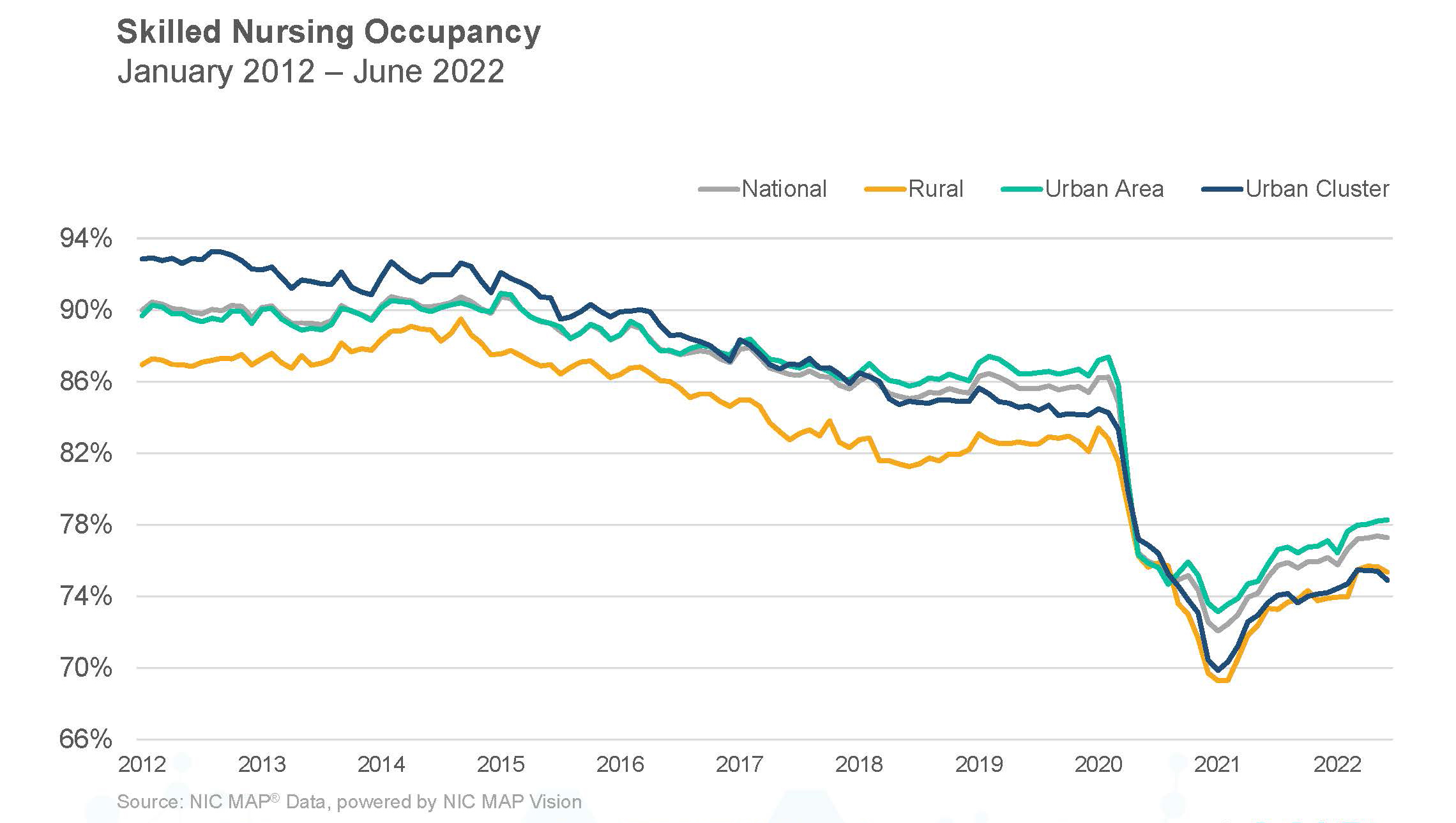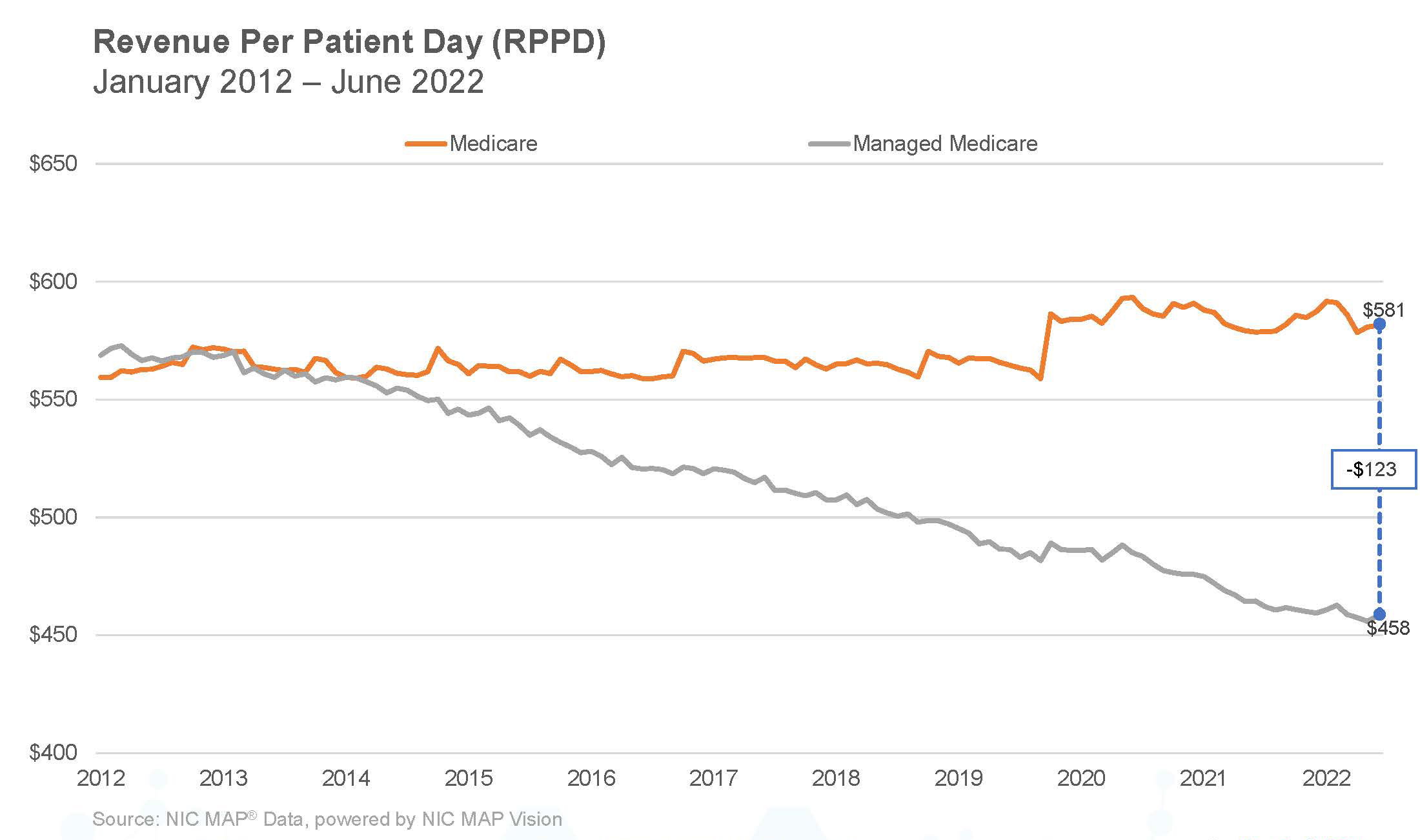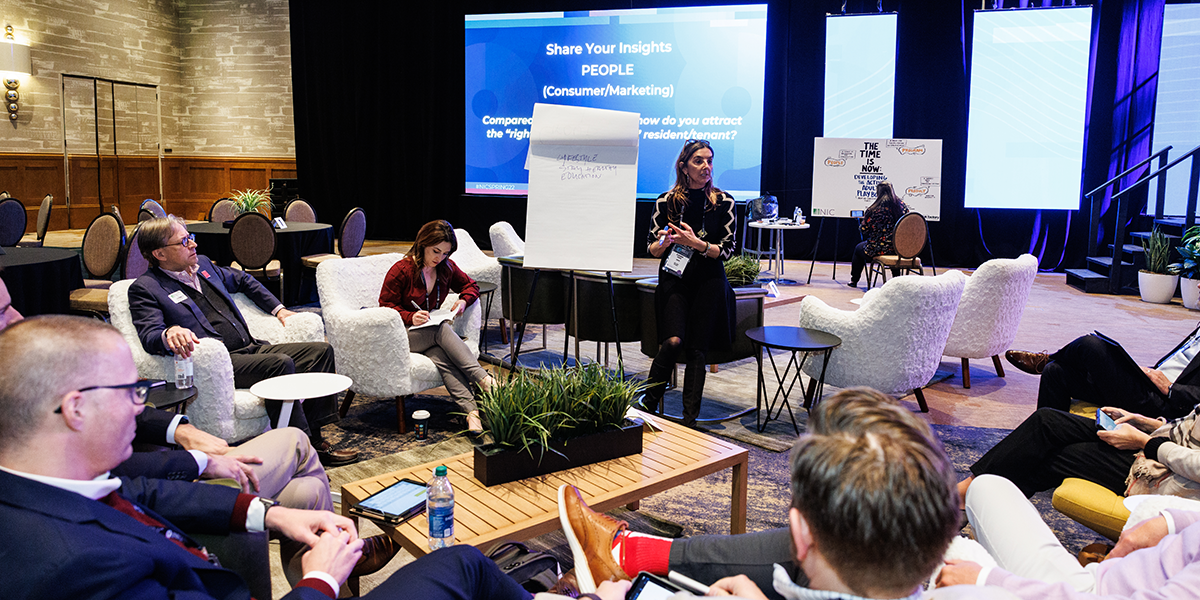A New Customer Arrives
NIC Co-Founder and Strategic Advisor Robert Kramer has identified “Six Key Drivers” that will shape the senior living industry over the next 10 years. Kramer is also Founder & Fellow at Nexus Insights, a think tank to advance the well-being of older adults through innovative models of housing, community and healthcare. NIC Notes is publishing a bi-weekly series detailing each key driver. What follows is an analysis of the third key driver: a new customer.
 Over the next 10 years, it is essential to our industry’s success to recognize that a new senior living customer is arriving with a different take on longevity. This means we must rethink our approach to the next generation of senior living residents.
Over the next 10 years, it is essential to our industry’s success to recognize that a new senior living customer is arriving with a different take on longevity. This means we must rethink our approach to the next generation of senior living residents.
We need to do more than just reinvigorate or even recast our product for this new customer. Rather, the challenge and the opportunity for us is to fundamentally reframe our expectations around aging itself. We must offer a vision to the new senior living customer of what it means to age well. We must adopt an aspirational model and language focused on personal growth and engagement. That is our challenge for the next decade.
Our new customers are the first generation in history to have witnessed their parents living longer than anyone had anticipated. They have also witnessed how society reacted to and provided for their elders. That experience has profoundly shaped what these customers want for themselves, which stands in stark contrast to what was offered their parents.
The first generation of private pay senior living customers, the residents we’ve served for the last several decades, experienced what I call accidental longevity. They never expected to live as long as they did. They were grateful to survive and took whatever society provided for them during their unexpected old age.
Take, for example, my father-in-law, Sam. He was a World War II U.S. Army veteran and New York school teacher who retired after a heart attack at age 62. He died 31 years later at 93. When he was 89, he said to me, “Bob, can you believe I’m still alive? Isn’t it amazing?”
Sam represents a group, our current customers, who have experienced accidental longevity. But what they were offered and accepted was a declinist view of aging. What do I mean? It means that your experience of aging and retirement is defined and shaped by inexorably ever-increasing deficits, by continually losing what makes life worth living.
When you retire, you disengage and disconnect from your office or work, and colleagues. That starts an inevitable period of decline as you gradually disappear from life, people, and importance with the ultimate disappearance being death. It’s not a cheery, optimistic hopeful view but a declinist view.
The medical doctor and bioethicist Zeke Emanuel wrote at age 57 an article, “Why I Hope to Die at 75,” for The Atlantic. His argument was that society, families and the older adult would be better off if nature took its course swiftly and promptly. He says he’ll be finished then, and better off leaving society because he can no longer make a positive contribution. His unsentimental argument attracted wide attention.
I once gave a talk to students and brought birthday cards designed for people at age 40, 50, 60, and 75. In this talk, I showed them the cards, which are funny, but highlight the progression of the declinist view of life. The card for the person at age 40 featured black balloons and black crepe. The message: You’re starting to lose it. After age 40, it’s all downhill from here. You’re losing the qualities that made life fun and worth living. Each card was more depressing than the last. This attitude is part of the basic notions of our culture, nowhere better seen than in Hallmark birthday cards for people as they reach successive milestones.
Our society is, frankly, built for people to retire and die in their 60s and 70s.
Our norms and expectations around retirement and aging, not to mention our social insurance system, are not designed for the longevity reality that we’re facing today as a society.
What Do Baby Boomers Want?
The declinist view stands in contrast to what our new customer wants, expects, and will demand. This new customer is among the first generation ever to experience purposeful longevity, not accidental longevity. They know they’re likely to live a long time, but they’re not going to approach longevity the way their parents did. My wife and I are great examples. Having gone through this process with our parents, we’re asking all the questions now about the next steps around where and how we want to live.
Purposeful longevity means our new customers are determined to thrive. They are looking for community and a sense of connection. I call it the “engagement” concept of retirement and aging which focusses on purpose, experience, and enjoyment. Paraphrasing a report by the McKinsey Health Institute, which I’ll reference again later, our customers aren’t just looking to add years to their lives but add life to their years.
Joe Coughlin at MIT’s AgeLab asks: What will I do with the next 8,000 days of my life? The average American at age 65 has nearly two decades to live (82 for men and nearly 85 for women). Those with a college education are likely to have 22 or more years (nearly 87 for men and 89 for women). That’s 8,000 days. What are you going to do with those days?
Baby boomers want to know how what you’re offering is not just going to enable them to age longer but to age better.
Our new customers want “next stage” living, not “end stage” living. “Next stage” living is about possibility. It’s about growth. It’s about the opportunity presented by living longer. In contrast, “end stage” living means being put in a place by society that takes care of me and keeps me safe because I’ve lived longer than I was supposed to.
That won’t cut it with the baby boomers. They want their health span to, as nearly as possible, match their lifespan, or as Lynne Katzmann at Juniper Communities describes it, they want “wellspan.”
I participated on a panel on aging at my Harvard 50th reunion. As part of the planning group and in response to the panel, we’ve had fascinating discussions. Almost all of the people have graduate degrees, and some said if they have to go through the experience of their parents, they’d rather not live that long. It’s staggering and it’s not about money. They have plenty of money. It’s rather about their life expectations and what that life looks like ahead of them.
If you’re interested in some of the research on this dynamic, I would refer you to the “New Map of Life,” a report by the Stanford Center on Longevity on planning for the 100-year life.
Another resource is the newly launched McKinsey Health Institute, which I mentioned previously. Their first study is titled, “Adding Years to Life and Life to Years.” What’s insightful is that their target audience is Gen Z because they will live the longest, and could otherwise be condemned to functional irrelevance, if attitudes don’t change.
Yale psychologist Dr. Becca Levy recently released a book, Breaking the Age Code: How Your Beliefs About Aging Determine How Long and Well You Live. It spotlights a revolutionary paradigm shift in how we think about aging. She has pioneered research that reveals how our mindset and beliefs shape our behaviors, our ability to heal, and our lifespan, in invisible but powerful ways.
This new mindset speaks to our new customers who have a different take on longevity. Our current value proposition has been that we have the care you need when you absolutely can’t live any longer without our help. There will always be a market for that.
However, the vast majority of baby boomers won’t be needing care-dominated senior living properties until their late 80s.
To borrow a phrase from Marc Freedman, the founder of Encore.org, which helps people 50+ find meaning in new careers, retirement for boomers will be one part purpose, one part passion, and one part paycheck, in varying combinations, depending on their position in life.
Some boomers will have to work because a paycheck will be a necessity. Others will seek a sense of purpose, perhaps to make a difference in people’s lives by volunteering. For others, they will be driven by passion as they explore new or delayed interests, such as learning to play a musical instrument.
We must change our value proposition. The options for our products are as varied as the interests and affinities that will attract new customers. But we need to ask ourselves: What personalized experiences that are metaphors for being alive or make life worth living will we offer our customers? That is our challenge for the next decade as a new customer arrives.
Next Up—Key Driver #4: Reframing Health and Healthcare. The focus will be on well care, not sick care. Senior living, healthcare providers and insurers will partner to proactively keep our residents out of the expensive acute care system.







 Over the next 10 years, it is essential to our industry’s success to recognize that a new senior living customer is arriving with a different take on longevity. This means we must rethink our approach to the next generation of senior living residents.
Over the next 10 years, it is essential to our industry’s success to recognize that a new senior living customer is arriving with a different take on longevity. This means we must rethink our approach to the next generation of senior living residents.

